buy low sell high
description: 2018 simulation video game developed by Red Fox Game Studios
80 results

Whiplash: How to Survive Our Faster Future
by
Joi Ito
and
Jeff Howe
Published 6 Dec 2016
For a country like the United States and for the companies that have grown up here, it feels like a backslide, a reversion to a more seat-of-your-pants time in our economic history. And maybe it is. But it is also critical to surviving and thriving in an age where safety in innovation is no longer a virtue and where taking chances is critical to keeping companies, and economies, afloat. PS: Buy Low, Sell High How do you make money investing? Buy low, sell high. I once asked a Japanese government fund manager investing in stocks how he picked his investments. He said, “I invest in big companies, the ones without risk.” I had to explain to him that everything has risk and that what you needed to understand was what the risks were and their probabilities so that you could assess the value of the stock.
…
People often tease the admissions of some of the top universities in Japan as a trailing indicator of where an industry is going. The “buy low, sell high” version of higher education is to try to find emerging fields where you have an unfair advantage and a passion. It might be risky, but you’re much more likely to find yourself at the top of an emerging field with less competition, and in the worst case, you still end up doing something you enjoy. In addition to “buy low, sell high,” another important lesson from venture investing is that when the cost of innovation becomes very low, trying to reduce losses is less important than trying to amplify your wins.
…
We often say, “The information is in the price.” The company may be in better shape than when I first invested, but people may be underestimating the risks and overestimating the opportunity. The stock could be overpriced. In other words, use the information that you have to understand risk, take risk, but buy low, sell high. Understanding the risk allows you to more accurately value the risk—and there is always risk. People who want to take over projects when they are doing really well and stick around until they are disasters are people who are “buying high and selling low.” Students who start studying a field that is peaking as they enter college are often faced with extreme competition for jobs and a declining industry by the time they graduate.

How to Predict the Unpredictable
by
William Poundstone
That would have earned a return of 6.70 percent, beating the stock market by 0.47 percentage points a year. If that doesn’t sound like anything special, take a look at the chart below. It shows the (hypothetical!) growth of a $1,000 portfolio invested since 1881. A buy-and-hold investment in the S&P stocks would have grown to an inflation-adjusted $2,932,724. A buy-low, sell-high portfolio, with PE limit values of 13 and 28, would have grown to $5,239,915. The return is only half the story. Look at how smooth the upper line is, compared to buy-and-hold, over the past twenty years. A PE-directed investor would have sold out of stocks in January 1997, sparing herself a couple of agonizing crashes.
…
Then you would have sold out of the market in January 1997, before the dot-com crash. In retrospect these actions look almost psychic. These three timely moves would have avoided horrific losses, thereby beating the market handsomely over a 132-year period. But notice that a trader who began using the buy-low, sell-high system in the mid-1930s could have spent an entire investing lifetime without ever getting a trading signal or benefiting from the system in any way! On the other hand, had you been in the market in 1997, or 1929, you would have appreciated the system’s guidance. There is a more powerful way to make use of PEs.
…
In this case, the highest returns — 14, 15, or 16 to buy and 24 or 25 to sell — form a bull’s-eye, surrounded by other high returns. A dart thrower’s reasonable aiming point might be 15/24. It returned 7.93 percent in this period, beating the S&P 500 by 1.70 percentage points a year. These thresholds are less extreme than those of the simpler buy-low, sell-high system because you’re not necessarily trading at them. When there is momentum, the trailing limit trick can often hitch a ride. This also has the effect of producing a few more trades. That helps ensure that the system will produce an advantage in the investor’s lifetime. Let me now justify the trailing stop value of 6 percent.
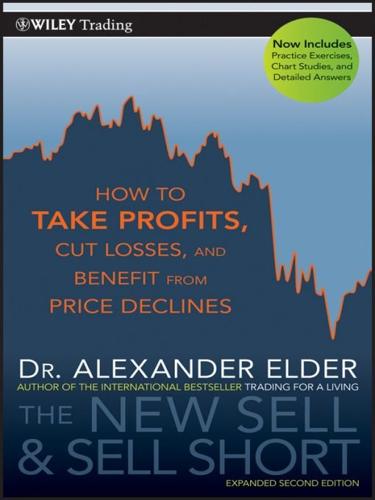
The New Sell and Sell Short: How to Take Profits, Cut Losses, and Benefit From Price Declines
by
Alexander Elder
Published 1 Jan 2008
Grading every entry and exit as well as every trade will train you to adopt a demanding and disciplined attitude towards your work. As a private trader, you have no supervisor. To win, you must become your own manager, and that’s what trade ratings help you accomplish. TWO TYPES OF TRADING There are two key approaches to buying. One is value buying: “buy low, sell high.” The other is momentum buying: “buy high, sell even higher.” A value buyer identifies value and tries to buy near or below it. He aims to sell when prices become overvalued. I put two exponential moving averages on every chart and call the space between them the value zone. My software draws a channel parallel to the daily chart’s slow moving average that encloses about 95% of all prices for the past three months.
…
A long-term trend trader can use channels to measure the quality of trades. 3. A trade capturing over 30% of a channel earns an “A.” 4. A trade capturing less than 20% of a channel earns a “D.” Question 29—Buying Find the incorrect statement about buying:1. The principle of value buying is “buy low, sell high.” 2. The principle of momentum buying is “buy high, sell even higher.” 3. The upper channel line identifies the level of depression and the lower channel line the level of mania in the markets. 4. Momentum trading works well in runaway trends. Question 30—Value Figure 3.30 Please match the following descriptions with the letters on the chart:1.
…
The channel was $7.89 tall at the time of the trade. The trade covered 34% of the channel, earning an A grade. It pays to concentrate on points and percentages, and not count money while in a trade. Question 33—Value Buying vs. Momentum Buying Answers 1. B and D 2. A, C, and E The principle of value buying is “buy low, sell high.” The principle of momentum buying is “buy high, sell even higher.” Value buying means going long when prices pull back to or below value. Buying on a breakout above an important earlier peak is a prime example of momentum buying. Notice several additional buying opportunities besides those marked with letters on this chart.
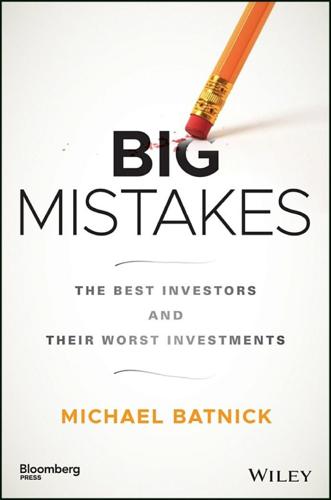
Big Mistakes: The Best Investors and Their Worst Investments
by
Michael Batnick
Published 21 May 2018
“Legacy of Benjamin Graham: The Original Adjunct Professor,” Heilbrunn Center for Graham and Dodd Investing, Columbia Business School, February 1, 2013. CHAPTER 2 Jesse Livermore Manage Your Risk Jesse Livermore was a larger‐than‐life, full‐blooded character who happened to embody every great trading maxim of the time. —Paul Tudor Jones “Buy low, sell high.” “Nobody ever went broke taking a profit.” “Buy when there's blood in the streets.” We often use these axioms to justify why we bought, sold, or held onto an investment. The problem with rules of thumb, specifically when it comes to investing, is that they mask complexity. There are far too many variables and crosscurrents pushing and pulling on the price of a security to boil everything down to a cute little phrase.
…
Jesse Livermore is the most famous, maybe the first famous, market speculator. The lesson that investors should learn from Livermore is how dangerous rules of thumb can be. If you catch yourself saying “buy when there is blood in the streets,” it's a good idea to remember that the man who basically invented market phrases couldn't even stick to them. Buy low, sell high sounds great, and the idea is, but like many things, it's easy to say, hard to do. Jesse Livermore, or JL, as his friends knew him, was born and raised on a farm in Acton, Massachusetts, in 1877. At 14, he left home for the big city—Boston—where he quickly got a job at Paine Webber as a board boy, earning $6 a week.
…
On the real stock exchange, the ticker was only the communication medium, and the real price being quoted on the floor exchange could be very different.4 In May 1901, JL would experience his first large loss as a professional speculator, this time from the short side. Shorting is the opposite of buying, and this suited Livermore, a natural skeptic, perfectly. Rather than buy low, sell high, the short seller is attempting to sell high, buy back low and pocket the difference. On a Monday before the market opened, Livermore put in orders to short 1,000 shares of U.S. Steel at $100 and 1,000 shares of Santa Fe Railroad at $80. He had used up his entire capital and was levered 4:1.
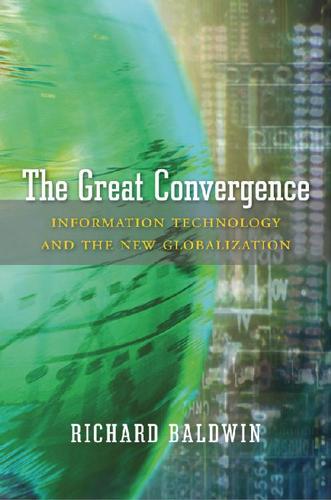
The Great Convergence: Information Technology and the New Globalization
by
Richard Baldwin
Published 14 Nov 2016
This is the fundamental reason that nations trade, and it explains why nations export what they do. It is also the root reason why trade can be win-win for all nations regardless of their overall level of competitiveness. Put simply, all nations can gain since trade is what could be called a “two-way, buy-low-sell-high deal.” This can be illustrated with the case of Swiss-Italian smuggling in the 1950s. Just after World War II, few European currencies were “convertible”—that is, they were basically worthless outside their own nation. A French or U.S. bank, for instance, would not exchange Italian lira into dollars or French francs.
…
But oddly enough, the Italians also won. The Italians got 100 kilos of cigarettes for the price of 75 kilos of rice, which means they effectively paid just 7.5 million lira for the 100 kilos of cigarettes instead of the full local price of 10 million liras. It is in this sense that the smuggling can be thought of as a buy-low-sell-high opportunity for both the Swiss and the Italians. The logic is absolutely bulletproof as curious readers can verify for themselves by changing around the numbers in Table 6. The same conclusion holds for any situation where the relative price of cigarettes and rice differ in the two nations—even if Switzerland ends up as the importer of cigarettes.
…
The same conclusion holds for any situation where the relative price of cigarettes and rice differ in the two nations—even if Switzerland ends up as the importer of cigarettes. Trade is just legalized smuggling, so the basic two-way gain from smuggling is also the basic reason that all nations gain from trade. That is to say, any time relative prices differ across nations, trade creates a two-way, buy-low-sell-high opportunity. Backing this up one stage—using costs of production to explain national prices—this logic means that all nations can gain whenever their production-cost profiles differ. Impact on National Production Patterns From this smuggling example it is clear that trade is a type of arbitrage and that it tends to narrow the preexisting differences in relative prices.

Learn Algorithmic Trading
by
Sebastien Donadio
Published 7 Nov 2019
Long positions make money when market prices are higher than the price of the position, and lose money when market prices are lower than the price of the position. Short positions, conversely, make money when market prices go down from the price of the position and lose money when market prices go up from the price of the position, hence, the well-known ideas of buy low, sell high, and buy high, sell higher, and so on. Multiple buy executions, or multiple sell executions for different amounts and prices, cause the overall position price to be the volume weighted average of the execution prices and quantities. This is called the Volume Weighted Average Price (VWAP) of the position.
…
Our first algorithmic trading (buy when the price is low, and sell when the price is high) You may now feel that you are impatient to make money, and you may also be thinking When can you start doing so? We have talked about what we will address in this book. In this section, we will start building our first trading strategy, called buy low, sell high. Building a trading strategy takes time and goes through numerous steps: You need an original idea. This part will use a well-known money-making strategy: we buy an asset with a price lower than the one we will use to sell it. For the purpose of illustrating this idea, we will be using Google stock.
…
A signal can use a large variety of inputs. These inputs may be market information, news, or a social networking website. Any combination of data can be a signal. From the section entitled Our first algorithmic trading (buy when the price is low, and sell when the price is high), for the buy low sell high example, we will calculate the difference in the adjusted close between two consecutive days. If the value of the adjusted close is negative, this means the price on the previous day was higher than the price the following day, so we can buy since the price is lower now. If this value is positive, this means that we can sell because the price is higher.
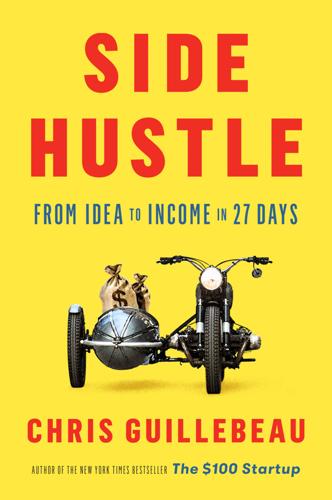
Side Hustle: From Idea to Income in 27 Days
by
Chris Guillebeau
Published 18 Sep 2017
Technically, he has customers, since there are real people buying his products—but he has no idea who they are, and in most cases they have no idea who he is, either. This hustle exists because of an inefficient market. The items he buys (typically computers and electronic equipment) sell at different prices from different vendors. Trevor’s goal is to buy low, sell high—or at least sell for a bit higher than what he paid. If there were no differences in the price of the items Trevor purchases to resell, he wouldn’t be able to make a profit. The skills required to be successful in this kind of business are different from those required for more traditional product and service businesses.
…
Each year after that, he’s either doubled or tripled that figure, to the point where it now brings in more than $100,000 a year exclusively from his hustle. Naturally, he still travels, and because he never touches most of his inventory (all of his orders are shipped out by Amazon.com), the hustle keeps humming along—even while he’s sipping champagne at thirty thousand feet. BUY LOW, SELL HIGH In the classic Oregon Trail game, a wagon full of pioneers sets out to travel from Independence, Missouri, to the West Coast wilderness. Along the way, they’re beset with numerous obstacles: disease, attack from bandits, environmental hardships. The goal of the game is to soldier through the challenges and eventually arrive at a faraway settlement with as many members of your party as you can.
…
Most players try to ration their supplies as best they can and try to make their money last the whole journey to Willamette Valley. But what many don’t realize is that you can buy and sell from the merchants you encounter, and naturally the price is different from place to place. Smart players will follow the classic advice for picking stocks: buy low, sell high. Trevor’s side hustle is a real-life Oregon Trail. He attempts to buy low and sell high. Sometimes he hits the jackpot with a big profit margin. Other times, he gets stuck with an item that doesn’t resell—basically a natural risk of the business. But by constantly experimenting with his inventory and prices, he’s able to continuously eke out consistent profits, along with all those points and miles he uses to travel in style with his family.
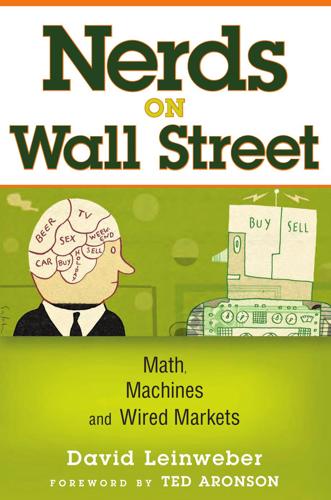
Nerds on Wall Street: Math, Machines and Wired Markets
by
David J. Leinweber
Published 31 Dec 2008
The biggest piece of the real cost of trading is in the market impact, the price movement caused by the trade itself. Here’s how market impact works. A typical market quote will be along lines of “1,000 shares offered to buy at $50, 1,000 shares to sell at $50.25.” Anyone can buy or sell at those prices in the advertised quantities. This is how specialists and market makers make a living: buy low, sell high. Market impact comes into play when you want to trade in quantities larger than the quoted size. By the inexorable laws of supply and demand, larger buy orders will generally happen at higher prices, and larger sells at lower prices. For our example, a skilled (or lucky) trader trying to buy 50,000 shares would buy the first 1,000 at the quoted $50, and might be able to find the next 49,000 at the same price, or close to it.
…
Arbitrage and Predictive Strategies Some quantitative strategies work by pure arbitrage, essentially finding the 4.9-cent nickels in the market before anyone else does. Examples are commodities, such as gold, that trade at the same time on multiple markets around the world. Arbitrageurs move in to equalize the disparities between markets when they arise, buying on the low-priced side and selling on the high-priced side. “Buy low, sell high” is what keeps markets together. Those participants with the lowest transaction costs jump in first, and the physics of supply and demand brings prices back in line. Being an arbitrageur is nice work if you can get it, but it is largely a game for only the largest players. Another level of quantitative strategy 190 Nerds on Wall Str eet involves making some kind of a prediction.
…
But that would conflict with maximizing volume to accommodate temporary imbalances between the flow of buyers and sellers. If a specialist or market maker had a way of anticipating which stocks might have that kind of volatility, he could “roll into a ball” and stay flat in those names, while keeping the buy low/sell high process in high gear on the others. This is why John Mulheren was counting messages on stock message boards. His unmatched market sense told him that if there was a huge spike in overnight message traffic about a stock, it was a good bet that something volatile might happen the next trading day, and at the very least, it was worth a deeper look before commencing his usual aggressive market making.

A Wealth of Common Sense: Why Simplicity Trumps Complexity in Any Investment Plan
by
Ben Carlson
Published 14 May 2015
It's all about harnessing the power of thinking long-term, cutting down on unforced errors, and having the patience to allow compound interest to work in your favor. The question is: How does one go about this? Here is some standard investment advice that is both simple and effective: Think and act for the long term. Ignore the noise. Buy low, sell high. Keep your emotions in check. Don't put all of your eggs in one basket. Stay the course. These are all great pieces of advice. The question is how. How do I know what long term even means for me? How do I buy low and sell high? How do I keep my emotions out of the equation? How do I diversify my portfolio correctly?
…
Studies on the timing of when to perform a systematic rebalance give varying results, but the main finding of a Vanguard study showed the act of rebalancing itself, no matter the interval (quarterly, semiannually, annually, etc.) was the key to investor success.9 You're automating a contrarian approach in this way as you buy the relative losers and sell the relative winners. Everyone knows the phrase buy low, sell high, but most don't understand how to actually put it into practice. Rebalancing is a systematic approach of buying low and selling high, every time you do it. Some investors prefer a rebalance every time their asset allocation drifts away from the target weights. Others pick a specific date or time frame.
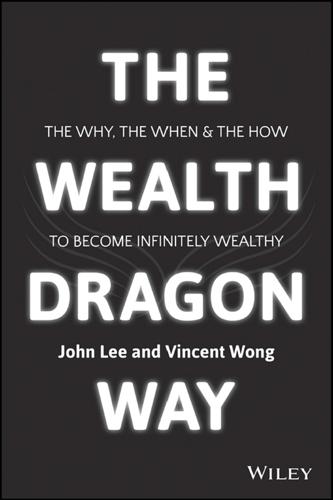
The Wealth Dragon Way: The Why, the When and the How to Become Infinitely Wealthy
by
John Lee
Published 13 Apr 2015
I often suggest to my students that they go and watch a fruit and veg seller in action. Go down to a local market and watch them sell. The successful ones make a huge fortune. It's a lucrative business, and a great one to learn in. Alan Sugar started out working for a greengrocer! Business is business. Sugar says it's simple: Buy low, sell high. It's when people start to complicate that process and deviate from it that they tend to fail. If you've lost focus, go back to basics; go watch the market stall owners. It's like in the movie Rocky III when Apollo Creed tells Rocky he's lost his edge; he takes Rocky back to basics at his old gym, where he sees young fighters who are hungry for success, with the “eye of the tiger” in their expressions.
…
A foolproof guide to losing weight. Okay, we didn't invent either formula; they've been around forever, but the fact is they are foolproof insofar as they definitely work. What's the catch? Human intervention! Value investing (and all we are doing here is applying value investing to property) is simple: Buy low, sell high. But people fail because they let their emotions get in the way: for example, they'll get a big tip about a stock and buy it despite the fact that it is overvalued, then become distraught when the tip doesn't pay off. Similarly, in the property market people get seduced by pretty houses and spend too much, then balk as the market dips a bit and they slip into negative equity.
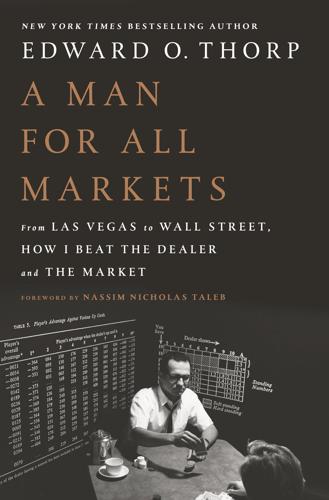
A Man for All Markets
by
Edward O. Thorp
Published 15 Nov 2016
Zucker, adapted for ebook Cover design: Pete Garceau Cover photograph: © Leigh Wiener v4.1 ep Contents Cover Title Page Copyright Preface Foreword Chapter 1: Loving to Learn Chapter 2: Science Is My Playground Chapter 3: Physics and Mathematics Chapter 4: Las Vegas Chapter 5: Conquering Blackjack Chapter 6: The Day of the Lamb Chapter 7: Card Counting for Everyone Chapter 8: Players Versus Casinos Chapter 9: A Computer That Predicts Roulette Chapter 10: An Edge at Other Gambling Games Chapter 11: Wall Street: The Greatest Casino on Earth Chapter 12: Bridge with Buffett Chapter 13: Going into Partnership Chapter 14: Front-Running the Quantitative Revolution Chapter 15: Rise… Chapter 16: …And Fall Chapter 17: Period of Adjustment Chapter 18: Swindles and Hazards Chapter 19: Buying Low, Selling High Chapter 20: Backing the Truck Up to the Banks Chapter 21: One Last Puff Chapter 22: Hedging Your Bets Chapter 23: How Rich Is Rich? Chapter 24: Compound Growth: The Eighth Wonder of the World Chapter 25: Beat Most Investors by Indexing Chapter 26: Can You Beat the Market?
…
The reporters often don’t know whether a fluctuation is statistically common or rare. Then again, people tend to make the error of seeing patterns or explanations when there aren’t any, as we’ve seen from the history of gambling systems, the plethora of worthless pattern-based trading methods, and much of story-based investing. Chapter 19 * * * BUYING LOW, SELLING HIGH It’s the spring of 2000 and another warm sunny day in Newport Beach. From my home six hundred feet high on the hill I can see thirty miles across the Pacific Ocean to Wrigley’s twenty-six-mile-long Catalina Island, stretched across the horizon like a huge ship. To the left, sixty miles away, the top of the equally large San Clemente Island is just visible above the horizon.
…
Investors who chase returns, buying asset classes on the way up and selling on the way down, have had poor historical results. The tech bubble that ended in 2000, the inflation in real estate prices that peaked in 2006, and the sharp drop in equity prices in 2008–09 were especially costly for them. On the other hand, the buy-low/sell-high investors, whom you might think of as “contrarian” or “value” investors, have tended to outperform by switching some funds between asset classes. The tables in appendix B show that stocks and commercial real estate have provided the best long-run results for investors. Interest rate investments have been roughly break-even after taxes and inflation, and only modestly positive for nontaxable investors.

Quit Like a Millionaire: No Gimmicks, Luck, or Trust Fund Required
by
Kristy Shen
and
Bryce Leung
Published 8 Jul 2019
You can’t sell things that have gone down. Secondly, rebalancing enforces good investor behavior. Like I said, you’re only allowed to sell assets that have gone up. On the flip side, you’re only allowed to buy assets that are sitting below target. In other words, you can only buy assets that have gone down. Buy low. Sell high. The definition of how to make money in the stock market. Finally, rebalancing forces you to ignore your two major investing emotions—greed and fear. And if it’s not obvious why overriding your emotions is important, let’s see what happens in a crash situation. During the 2008 crisis, every few days there would be another stomach-churning five-to-seven-hundred-point drop in the stock market.
…
See also Cash Cushion and Yield Shield; rich people Betty’s retirement example, 163 Bill’s story, 60 birthday card, author’s story about, 7–8, 50 bitter melon, author’s father’s story about, 46 blood money, poverty, 3–9 Bloomberg, statistics concerning failure of entrepreneurs in the first year, 160 Bogle, John, 272 bonds Cash Cushion and Yield Shield, 178, 185 exchange-traded funds (ETFs), 177 inflation and, 220 preferred shares vs., 180 stocks vs., 101–5, 101–6 surviving a stock market crash, 100–104, 101–3, 108, 111, 114, 114, 116, 116, 195 taxes, 137, 140, 141–44, 142, 142 See also specific bonds brain blaming your brain, 56, 63–75, 68–69, 71–72, 74 budget and your brain, understanding the relationship between the two, 75–77, 76 poverty and your brain, understanding the relationship between the two, 5–6, 7, 9 Brandon’s story, 259 Branson, Richard, 24 Brickman, Philip, 63 buckets and backups, 203–18, 220 Bucket System, 204, 204–7, 206–7, 217, 220 budgeting, 70–77, 71–72, 74, 76 Buffett, Warren, 121, 272, 275 bullets vs. missiles, 213–14, 214 Burnett, Frances Hodgson, 14 buying low, selling high, 115, 176 buying vs. renting a house, 85–86, 88 California, 57, 107, 153, 154 Cambodia, 49, 189, 191, 195, 198 CampFi, 251 Canada/Canadians becoming wealthy, 186, 197, 200, 203–6, 230 middle class, 39, 43, 69, 94, 106, 107, 108, 108, 109, 111, 121, 129, 132–33, 132–33, 152–53, 181, 186, 201, 244 poverty, 7–8, 10, 16, 24, 27, 37, 39, 43, 50 CanadianTravelHacking.com, 197 capital gains harvesting, 149–52, 149–53, 155, 206–7, 210, 226 taxes and, 138, 139, 153–54, 263 See also stocks cardboard box dollhouse, author’s story about, 13 career choice vs. passion, 30 cars, 73, 75, 222–23, 234, 235–36 car-sharing services, 223, 256 cash-asset swap, 208–9, 208–10 Cash Cushion and Yield Shield, 173–87, 188, 298–302 backup plans, 210, 211, 212, 215, 218 bonds and, 178, 185 Bucket System, 204, 204–7, 206–7, 217 dark side of early retirement, the fear of uncertainty, 248, 249 financial independence (FI) and, 173, 186 4 Percent Rule, 164, 175–87, 178, 181–86 inflation and, 220, 221 interest income, 180, 187 raising the Yield Shield, 179–85, 181–85, 187 stock market, 174, 175–77, 180, 181 See also becoming wealthy catastrophe, expectation of, 35 CBC (Canadian Broadcasting Corporation), 250 Charlton, Rob and Robin, their story, 259 Chartered Public Accountant, 135, 155 Chase Sapphire Preferred (credit card), 196 Chautauqua retreat, 250–51 Chiang Mai, 195, 197 chickens, packaging of, 7 chi ku, 46, 47, 52, 156, 188 child-rearing.
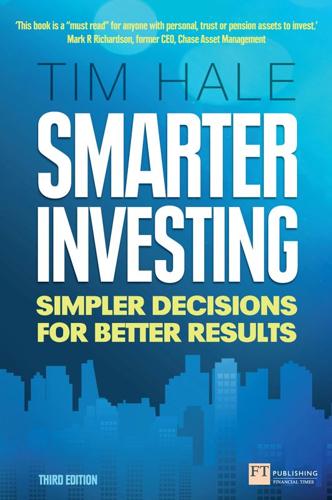
Smarter Investing
by
Tim Hale
Published 2 Sep 2014
Nothing sedates rationality like large doses of effortless money.’ Buy high, sell low – a recipe for wealth destruction Figure 5.1 shows how many people invest, allowing their emotions and lack of market knowledge to drive the type of wealth destruction that you saw in the research above. While most investors can understand the simple concept of buy low, sell high, the very nature of their behaviour results in exactly the opposite. Investors tend to be influenced by what is going on in the markets over the short term. This makes them vulnerable to what the industry refers to as being ‘whip-sawed’ as they move from last year’s bad performing investment to this year’s best performer.
…
The rebalancing bonus represents the return benefit that is accrued by owning a basket of uncorrelated/low-correlated individual futures (agricultural products, oil, metals, etc.) with high standard deviation that is rebalanced regularly. Even if the net excess return on each individual futures contract is zero (implying no insurance premium), a reasonable excess return can potentially be generated by regular rebalancing of the basket (a buy-low-sell-high strategy). The contribution of each element is debated, with some arguing that the return is primarily due to the insurance premium (Gorton and Rouwenhorst, 2004) and others arguing for the rebalancing bonus (Erb and Harvey, 2006). It is likely that all these factors, in some proportion, contribute to the historical excess return evidenced.

I Will Teach You To Be Rich
by
Sethi, Ramit
Published 22 Mar 2009
You can hear the media scream “Global financial crisis!” only so many times before you decide to opt out altogether. And yet, a drop in the stock market is a good thing for young people. It means investments are essentially on sale, so we can buy stocks for less now and then let our money grow for decades. When people say “buy low, sell high,” this is what they’re talking about. Three Startling Stats About Young People and 401(k)s * * * Remember, a 401(k) is just a type of investment account—one that offers huge benefits that I’ll cover on page 78. Here’s what’s stunning: Of employees age twenty-five and under, Less than one-third participate in a 401(k); Less than 4 percent max out their contributions; And, astonishingly, only 16 percent contribute enough to get the full company match.
…
In fact, I just made the largest investment of my life, moving $46,000 in my 401(k) from cash into a Fidelity index fund. Am I scared? You bet. $46,000 is a hell of a lot of money. But I’m taking my cues from Warren Buffett, the world’s richest man, who in 2004 gave this advice: “Be fearful when others are greedy and greedy when others are fearful.” Or, to put it in more familiar terms, “Buy low, sell high.” I think the market is low right now, so I’ve made a lump-sum investment. But buying low can be intimidating. Suppose the markets never go back up? Nobody wants to wrestle with a bear. I’m taking a risk by attacking the beast head on. Moves like this don’t bother me as much as they might bother other people (my wife, for example) because my risk tolerance is high.

Mathematics for Economics and Finance
by
Michael Harrison
and
Patrick Waldron
Published 19 Apr 2011
The most powerful application is in the derivation of option-pricing formulae, since options can be shown to be identical to various synthetic portfolios made up of the underlying security and the riskfree security. The simple rule for figuring out how to exploit arbitrage opportunities is ‘buy low, sell high’. With interest rates and currencies, for example, this may be a non-trivial calculation. Exercise: If the interest rate for one-year deposits or loans is r1 per annum compounded annually, the interest rate for two-year deposits or loans is r2 per annum compounded annually and the forward interest rate for one year deposits or loans beginning in one year’s time is f12 per annum compounded annually, calculate the relationship that must hold between these three rates if there are to be no arbitrage opportunities.
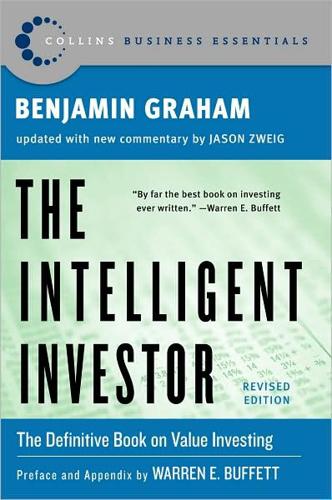
The Intelligent Investor (Collins Business Essentials)
by
Benjamin Graham
and
Jason Zweig
Published 1 Jan 1949
(The popularity of something like the Dow theory may seem to create its own vindication, since it would make the market advance or decline by the very action of its followers when a buying or selling signal is given. A “stampede” of this kind is, of course, much more of a danger than an advantage to the public trader.) Buy-Low–Sell-High Approach We are convinced that the average investor cannot deal successfully with price movements by endeavoring to forecast them. Can he benefit from them after they have taken place—i.e., by buying after each major decline and selling out after each major advance? The fluctuations of the market over a period of many years prior to 1950 lent considerable encouragement to that idea.
…
bull markets; and bargains; characteristics of; and convertible issues and warrants; and dealings with brokerage houses; death/end of; history and forecasting of; length of; and market fluctuations; and new offerings; and portfolio policy for aggressive investors Bunker Ramo Corp. Burlington Northern Railroad Burton-Dixie Corp. Bush, George W. business: buying the; definition of good; knowing your business principles: of Graham, “businessman’s investment,” BusinessWeek buy-low-sell-high approach “buy what you know,” buying back shares. See repurchase plans buzzwords, investing C.-T.-R. Co. Cable & Wireless California Public Employees’ Retirement System calls capital. See also capital gains; capitalization; return on invested capital (ROIC); specific company capital gains; and market fluctuations; and portfolio for aggressive investors; taxes on Capital One Financial Corp.
…
See also per-share earnings; security analysis; type of report First Tennessee National Bank, Firsthand mutual funds Fischhoff, Baruch Fisher, Kenneth Fisher, Lawrence fixed-value investments. See also type of investment Fleet Boston Financial Corp. Florida real estate, collapse of fluctuations, market; and aggressive investors; and asset allocation; in bond prices; book value and; and brain; and buy-low-sell-high approach; and defensive investors; example of; and forecasting; and formula investment plans; as guide to investment decisions; history of (1871–1972); of investor’s portfolio; managers and; and margin of safety; and mispricing of stock; Morgan’s comments about; and Mr. Market parable; and other people’s mistakes; silver lining to; timing and pricing of; and valuation FMC Corp.
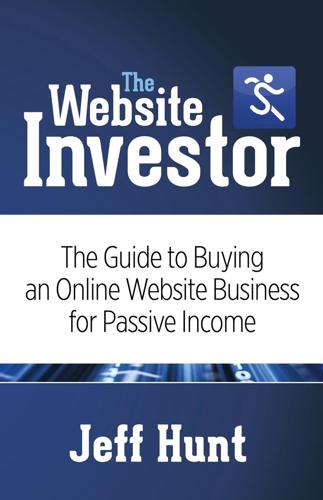
The Website Investor: The Guide to Buying an Online Website Business for Passive Income
by
Jeff Hunt
Published 17 Nov 2014
• I had unwittingly acquired some sites that were legal to operate but pushed the limits of my own personal ethics. • The website had lost most of its value, and I had no clue how to turn it around. I sold to avoid a total loss. Website flipping is often compared to real estate flipping. However, beyond the principle of “buy low, sell high,” the two have little in common. After a house is purchased and remodeled, it needs to be sold, or it becomes a liability. It is either tying up cash that could be used elsewhere, or it carries ongoing interest and tax expense. After a website is purchased and improved, it is a profitable asset, not a liability.
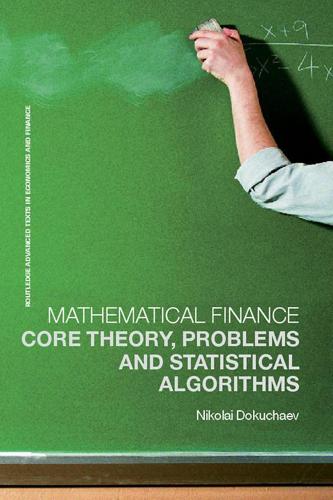
Mathematical Finance: Core Theory, Problems and Statistical Algorithms
by
Nikolai Dokuchaev
Published 24 Apr 2007
Example 5.11 Merton’s type strategy is a strategy in a closed-loop form when γ(t)=µ(t)θ(t)X(t), where µ(t)>0 is a coefficient, X(t) is the wealth, is the so-called market price of the risk process. This strategy is important since it is optimal for certain optimal investment problems (including maximization of E ln X(T)). Example 5.12 (‘buy low, sell high’ rule). Let T=+∞. Consider a strategy when where C>0 is a constant, τ=min{t>0: S(t)=K}. Here K> S(0) is a ‘high’ price K>S(0), or the goal price. Let X(0)=S(0) and β(t)≡0, then X(τ)=S(τ)=K>X(0). This strategy has interesting mathematical features for the non-degenerate diffusion model (i.e., when σ(t)≥c>0 for some constant c>0).

The Gone Fishin' Portfolio: Get Wise, Get Wealthy...and Get on With Your Life
by
Alexander Green
Published 15 Sep 2008
After all, when you look backward, it’s glaringly obvious when you should have been in the market and when you should have been out. Look forward, however, and it gets a whole lot tougher. All you see is a blank slate. Market timers often concede their timing won’t be perfect, but even missing some of the decline is better than enduring the whole thing, right? Wrong. To successfully time the market requires you to buy low, sell high, and then buy low again (while covering all spreads, trading costs, and taxes on capital gains). Fail, and you’ll get left behind while the equity train rumbles on. FIGURE 5.2 Hypothetical Growth ($10K invested in the S&P 500 from January 1978 to December 2007) Note: This example does not include dividend reinvestment or tax implications.
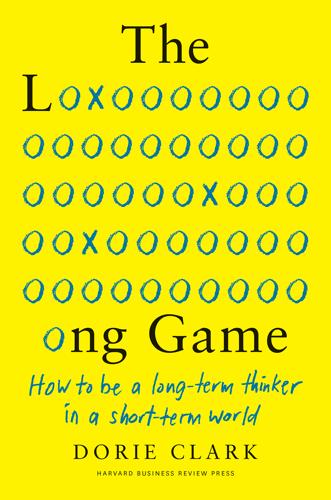
Long Game: How Long-Term Thinker Shorthb
by
Dorie Clark
Published 14 Oct 2021
Noticing what truly made her happy—and where others naturally gravitated to her—helped Rebecca realize she wanted to become an executive coach. A year later, she launched her own firm. Constance Dierickx, who started her career as a stockbroker at Merrill Lynch, also followed her curiosity: why did people make such irrational decisions about their money? We all know the mantra: buy low, sell high. And yet smart people would consistently do the opposite, selling in a panic or becoming greedy when the market was obviously frothy. “I began spending hours every week in a bookstore, going back and forth between the decision science and psychology books,” she told me. She knew she enjoyed the deep relationships with her clients at the firm, but kept coming back to her interest in decision-making.

Survival of the Richest: Escape Fantasies of the Tech Billionaires
by
Douglas Rushkoff
Published 7 Sep 2022
It turns out that Steve Case’s team had been looking for months for a way to spend his high-priced shares—an exit strategy—while there was still time. Instead of investing in digital innovation, he hired investment bank Salomon Smith Barney to find an acquisition target. This was not any sort of new media strategy. It was plain old buy-low-sell-high horse trading, amplified by the massive bubble of digital finance. As Ted Turner later explained it in characteristic hyperbole, “the Time Warner–AOL merger should pass into history like the Vietnam War and the Iraq and Afghanistan wars. It’s one of the biggest disasters that have occurred to our country.”
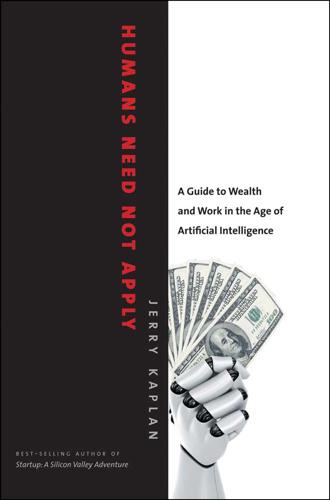
Humans Need Not Apply: A Guide to Wealth and Work in the Age of Artificial Intelligence
by
Jerry Kaplan
Published 3 Aug 2015
See class Social Security, 14, 169, 173–75 private investing vs., 182–85 social status, 117 software-as-a-service (SAAS), 43 solar power, 44 song identification, 39 sound recognition, 39, 42–43 Sousa, John Phillip, 208 “The Menace of Mechanical Music,” 192–93 space exploration, ix, 114, 116, 207 sports, 114–15, 161–63 Sputnik, ix SRI International, 27 Standard & Poor’s, 178 standard of living, 165–66 Stanford Artificial Intelligence Lab, x–xi, 27, 35, 38, 51, 52–53, 72, 85 Stanford Legal Informatics course, 148–49 Star Trek (TV series), x, 16 stockholders, 14–15, 58, 174–78 family members vs. diverse base of, 177, 178, 181–82 restricted vesting and, 184. See also assets ownership stock markets: “buy low, sell high” maxim, 53, 54 computer-programmed trading decisions, 52, 53–58, 61–63, 74, 90, 91, 95, 97, 98, 106 fundamental analysis approach to, 62 putative purpose of, 58 sharp drop (2010) in, 8–9, 61–63 strawberry pickers, 143 structural programming, 20–21 structural unemployment, 137 student loans, job mortgage loans vs., 156 Super Bowl, 161–62, 186 Supreme Court, U.S., 90, 215n9 surgery, 6, 35 surveillance, 9, 64–75, 91 swarm robotics, 44 Symantec, 27 symbolic systems, 21–22, 25, 29 predefinition of symbols, 24 synthesizer (music), 194 synthetic intellects, 5–11, 20, 197–209 Amazon building of, 103–6, 134–35 as artificial people, 90, 198 assets ownership and, 90–91, 199–200 capabilities of, 5, 6, 70, 134, 141, 146–48, 151, 199–201 competitive advantage of, 106, 161–62, 186, 187 corporation parallels with, 90, 91, 199–200 crime capability of, 87–89 danger potential of, 7–11, 40, 72–75, 199–208 IBM’s Watson as, 26, 30, 31, 36, 150, 198 individuality of, 88 legal personhood of, 90–91, 199–200 machine learning programs and, 87 moral agency of, 80–92, 105–6, 199–200, 205–6 realism of, 197 remote control of, 12 taxes, 170, 175, 177, 180–81 incentives, 14, 15, 154, 167, 183 taxi services, 16 technological revolution, 29–30.
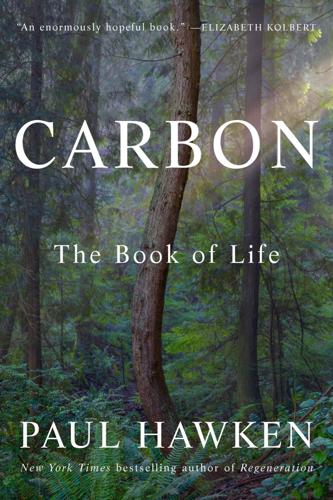
Carbon: The Book of Life
by
Paul Hawken
Published 17 Mar 2025
Decisions and tactics were taking place at extraordinary levels of complexity. A single plant can have a million root tips connected to mycelial hyphae, operating independently but not autonomously. According to Kiers, fungal transactions appear similar to marketplace transactions. The fungi seemed to have a “buy low, sell high” strategy where they would stock up on phosphorus when it was abundant in one area and exchange it to plants where it was scarce in exchange for richer carbon rewards. Toby conducted an experiment where roots deficient in phosphorus were placed in an area not far from well-nourished roots. When the mycelium detected the lack of phosphorus in one group of roots, it moved phosphorus to those areas, receiving a higher carbon payment.
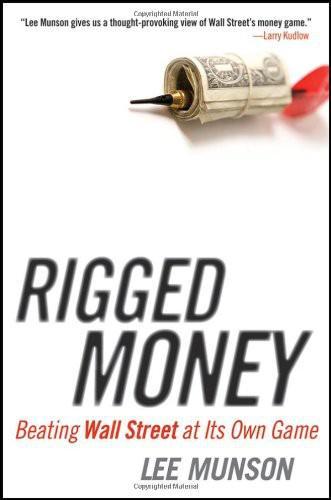
Rigged Money: Beating Wall Street at Its Own Game
by
Lee Munson
Published 6 Dec 2011
Some people just want to accumulate wealth and hold onto stocks forever, but even the desire for endless fortune doesn’t mean an endless holding period. Would you still want to own shares of a typewriter company? Of course the basic assumption of buying and holding a stock is a better bet than the old adage of buy low sell high. The concept we are exploring here is buy and never sell. Who would want to sell a company that is supposed to make profits over the long haul? Plus, how would you know when to sell? If you hold a stock forever, it shouldn’t matter when you buy it since it will be a one-time transaction. This would be fine if most corporations made money in large amounts forever and paid out the profits to you.

The Fix: How Bankers Lied, Cheated and Colluded to Rig the World's Most Important Number (Bloomberg)
by
Liam Vaughan
and
Gavin Finch
Published 22 Nov 2016
From the minute he logged onto his Bloomberg terminal and the red light next to his name turned green, Hayes was on the phone quoting guaranteed bid and offer prices on the vast inventory of products he traded. Hayes prided himself on always being open for business no matter how choppy the markets.1 It was his calling card. Hayes likened this part of his job to owning a fruit and vegetable stall. Buy low, sell high and pocket the difference. But rather than apples and pears, he dealt in complex financial securities worth hundreds of millions of dollars. His profit came from the spread between how much he paid for a security and how much he sold it for. In volatile times, the spread widened, reflecting the increased risk that the market might move against him before he had the chance to trade out of his position. 22 THE FIX Making markets offered a steady stream of income, but it wasn’t where the big money came from.
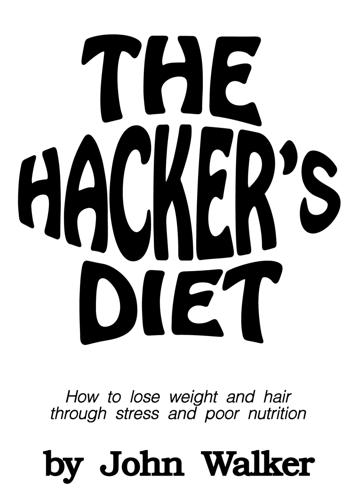
The Hacker's Diet
by
John Walker
Live long and prosper. John Walker Sausalito, California January, 1991 Neuchâtel, Switzerland January, 2011 Introduction About losing weight There's an old Wall Street tale: a tyro asks an old-timer, “How do you make money in the market.” The wise man answers, “Nothing could be simpler: buy low, sell high.” The beginner asks, “How can I learn to do that?” The sage responds, “Ahhhh…that takes a lifetime.” Simple doesn't mean easy. There is no magic secret to losing weight and keeping it off, just as there is no hidden key to instant wealth. Nonetheless, every year another crop of “magic diet” and “secrets of investing” books appear on already-creaking shelves.
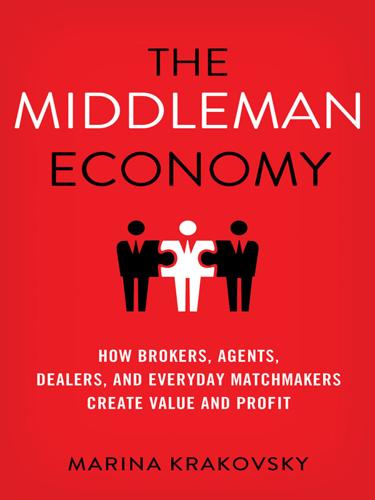
The Middleman Economy: How Brokers, Agents, Dealers, and Everyday Matchmakers Create Value and Profit
by
Marina Krakovsky
Published 14 Sep 2015
It’s covered with caked-on mud and has a large rip in its sail, but Wolfe thinks he can sell it for much more than $20 because it’s the kind of toy Benjamin Franklin was writing about back in the 1770s—a true collector’s item. (“That’s what’s great about digging in barns in New York,” he tells us. “You find so much more earlier stuff than you do when we’re in Iowa.”) The Middleman Who Skips the Middleman * * * The show plays up the simple “buy low, sell high” logic of the picking business by displaying, in numbers on the screen, what Wolfe paid for each item and what the item’s worth. But these numbers ignore Wolfe’s less obvious costs. At the end of the pickers’ visit, the hoarder-collector’s daughter and son-in-law are happy, and Wolfe and Fritz look happy, too—but after picking through fourteen trailers, haggling over their picks, and packing their haul into the van, the picking partners are exhausted, and it’s not at all clear they really made a profit.
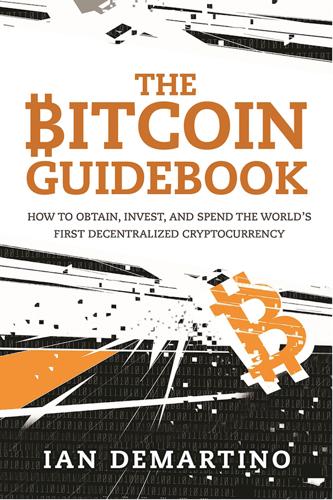
The Bitcoin Guidebook: How to Obtain, Invest, and Spend the World's First Decentralized Cryptocurrency
by
Ian Demartino
Published 2 Feb 2016
You don’t necessarily have to beat the likes of this man, but if you are serious about making a profit, you will have to match his level of dedication. On the other hand, Bitcoin is very volatile compared to nearly every other commodity—stocks, precious metals, currencies—so there is a lot of money to be made if you can ride the waves. Of course, if you are interested in day trading at all, you have by now heard the “buy low, sell high” principle that is and always will be the golden rule of investing, regardless of whether you are playing the long or the short game. Everyone knows this strategy, but day trading only works because most people don’t adhere to it. They want to adhere to it, they probably even think they adhere to it, but they don’t.

The Bogleheads' Guide to Investing
by
Taylor Larimore
,
Michael Leboeuf
and
Mel Lindauer
Published 1 Jan 2006
The earlier you start, the richer you become. Invest most or all of your money in index funds. Keep your costs of investing and taxes low. Don't try to time the market. Tune out the noise, rebalance your portfolio when necessary and stick with your plan. By doing those things, you will intelligently manage risk. You will buy low, sell high and have the power of compounding working in your favor. You will slowly but systematically build wealth and a nest egg for a comfortable retirement. With a little luck, you will have more money than you dreamed you would ever have. These time-tested techniques have worked for millions of other people and they can work for you, too.

The Pragmatic Programmer
by
Andrew Hunt
and
Dave Thomas
Published 19 Oct 1999
Technology exists along a spectrum from risky, potentially high-reward to low-risk, low-reward standards. It's not a good idea to invest all of your money in high-risk stocks that might collapse suddenly, nor should you invest all of it conservatively and miss out on possible opportunities. Don't put all your technical eggs in one basket. Buy low, sell high. Learning an emerging technology before it becomes popular can be just as hard as finding an undervalued stock, but the payoff can be just as rewarding. Learning Java when it first came out may have been risky, but it paid off handsomely for the early adopters who are now at the top of that field.
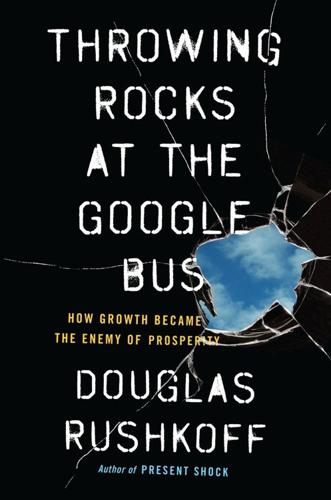
Throwing Rocks at the Google Bus: How Growth Became the Enemy of Prosperity
by
Douglas Rushkoff
Published 1 Mar 2016
So much for taking charge of our own finances.21 Fully aware of these liabilities, the financial services industry became less concerned about helping people invest for their own futures than about finding ways to make money off that very need: to game the system itself, all the while finding new ways to make investors feel they were getting in on it. This makes the typical pyramid scheme of the original stock market look honest by comparison. On the stock exchange, at least, those who get in early can win—albeit at the expense of those who come in later. That’s just the way investing works. You speculate on the future value of things—buy low, sell high. The patsy is the guy doing the opposite. In the 401(k) game, the patsy is anyone who follows the advice of the human resources department and surrenders a portion of his or her paycheck to the retirement planning industry, all under the pretense of personal responsibility. Extending this trend, digital trading platforms require individual investors to take even more responsibility for their own investments and correspondingly shoulder yet more risk.
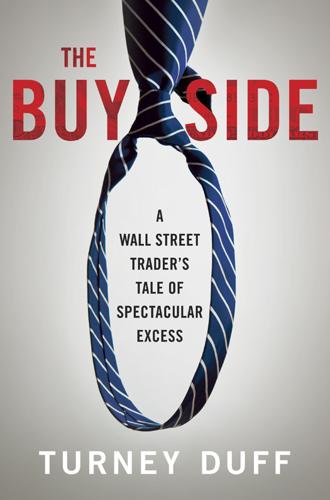
The Buy Side: A Wall Street Trader's Tale of Spectacular Excess
by
Turney Duff
Published 3 Jun 2013
At the last minute, I say, we decided we didn’t need to short any of those stocks. “Not a big deal,” she manages to say, but she sounds sick to her stomach. Whoever she leaked my orders to must be livid with her. They had to have gotten crushed. Undoubtedly, they paid a much higher price than where they shorted it in front of my fake orders. Trading 101: buy low, sell high. Ooops. Nothing worse than losing a few million dollars in the last minute of the year. Happy New Year, I tell Tracey, but she’s already hung up the phone. I know it’s going to be a happy one for me. EIGHT MONTHS later the city is blistering hot, concrete heat, brick heat. Opening the cab door is like opening the door of a pizza oven.
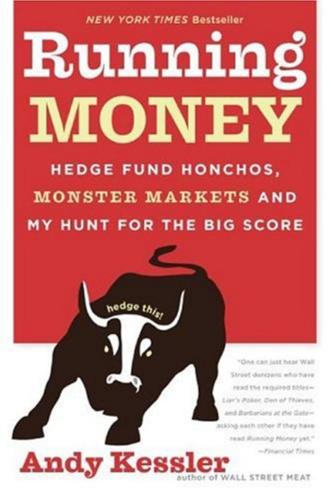
Running Money
by
Andy Kessler
Published 4 Jun 2007
> > > Hedgies After a dozen years of working on Wall Street, I find myself running a hedge fund. I’m not even sure how that happened—I’ve either reached the top or the bottom of my profession. If I screw up, it certainly will be the basement. If that wasn’t enough, I am completely and utterly lost—clueless. About the only thing I really know is “Buy low, sell high.” But buy and sell what? There are thousands of different stocks and bonds and currencies and commodities. As an analyst on Wall Street, you just say Buy or Sell, but someone else actually does it. Your call is just a concept. Now it’s real money. Actually, it’s still someone else’s money, but I am now personally responsible for it.

Rigged: The True Story of an Ivy League Kid Who Changed the World of Oil, From Wall Street to Dubai
by
Ben Mezrich
Published 11 Aug 2008
Because those meatheads are actually pretty impressive, when you think about ’em. Not one of them is making less than five hundred thousand dollars a year. A few are bringing down millions, and an even smaller few are bringing down tens of millions.” David whistled. It was hard to imagine a guy like Vitzi making that kind of money. David knew the basics of trading—buy low, sell high, and the reverse—but when it came to oil in all its forms, he was a neophyte. How did you judge supply and demand? How did you factor in all the variables, from the weather to wars in the Middle East to drunk captains driving oil freighters into the Alaskan shoreline? “It’s like that scene in The Matrix where all the numbers are floating down the screen,” Mendelson said, leaning back in his chair and lifting his bare feet up onto his desk.
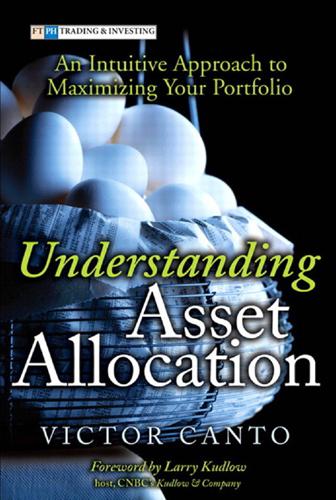
Understanding Asset Allocation: An Intuitive Approach to Maximizing Your Portfolio
by
Victor A. Canto
Published 2 Jan 2005
There is nothing wrong with that at all, and if you select stocks this way you are sure to pick your share of winners. In fact, investors and managers must select this way when it gets down to the nitty-gritty of filling a portfolio. However, I caution that anyone who looks too narrowly in their investing life will all too often miss the big picture and the upsides that come with it. Buy low, sell high? Sure. But keep your eyes open, from the top on down. I have long held that any investor starting out should build an 80/20 portfolio consisting of 80 percent stocks and 20 percent bonds. In the long run, say thirty years, such an investor will almost undoubtedly beat out someone who began with, for example, a 60/40 split.
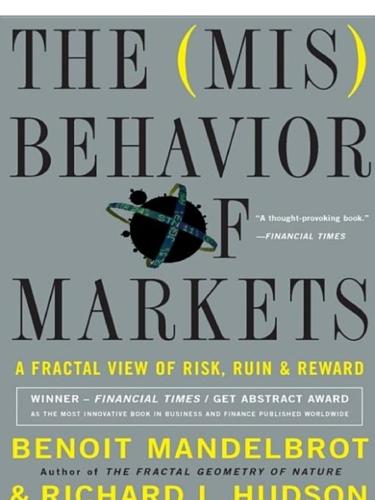
The Misbehavior of Markets: A Fractal View of Financial Turbulence
by
Benoit Mandelbrot
and
Richard L. Hudson
Published 7 Mar 2006
Another common financial ratio used by stock-pickers is market-to-book: That is, divide the stock price by the per-share value that the company’s accountants report in the financial reports, or “book.” Surprise: Companies with low ratios—that is, those that the stock market values less than does the company’s accountant—perform better over time than companies with high ratios. Of course, this is nothing more than the old Wall Street mantra, buy low, sell high. And again, by the standard theories, it should not work. Many more such anomalies have been reported in economics journals. But this kind of research came to fruition in an especially influential 1992 paper by Fama and French. They tried to create the economic equivalent of a double-blind drug trial, devising tests and controls to prevent any unintended bias from slipping into the results.
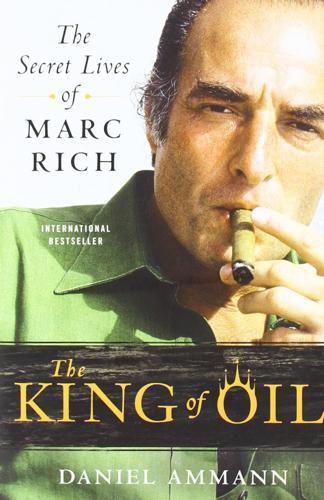
The King of Oil: The Secret Lives of Marc Rich
by
Daniel Ammann
Published 12 Oct 2009
One aspect of Marc Rich’s career that was virtually forgotten during the entire affair was his unique entrepreneurial success. For starters, he is more than just a profiteer and boycott breaker. It was not Rich’s alleged tax evasion that made him the twentieth century’s most dominant trader. When I asked how he had managed to achieve so much, he answered with the standard trader’s joke, “Buy low, sell high.” Then he added in a more serious tone, “The ingredients are hard work, hard work, and hard work—and good collaborators. Obviously a little bit of luck helps also.” These are surely important elements of success, but they cannot provide a good explanation for the sheer scale of his remarkable achievements.

Why Aren't They Shouting?: A Banker’s Tale of Change, Computers and Perpetual Crisis
by
Kevin Rodgers
Published 13 Jul 2016
They went to the right schools and have nice cufflinks. Besides that? Nothing.’ The second type of business does require the bank to take risk. (We, in FX, were one of these; Loic was naturally keener on this model.) In these businesses, a bank will deal on its own account and attempt to make a profit by obeying the age-old adage of ‘buy low, sell high’. This is known as the ‘principal’ model. Most parts of a bank operate on this basis. The core activity of taking deposits and making loans is a principal business. If you borrow money from your bank, the bank is at risk. In part, that is because the money the bank itself has borrowed in order to lend it to you might have a different maturity to your loan, or it might have a floating interest rate versus your fixed one (or vice versa).
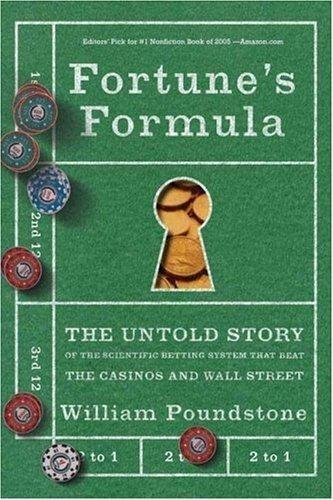
Fortune's Formula: The Untold Story of the Scientific Betting System That Beat the Casinos and Wall Street
by
William Poundstone
Published 18 Sep 2006
By then the broad MIT community had heard stories of Shannon’s stock market acumen. So many people wanted to attend one talk that it had to be moved to one of MIT’s biggest halls. Shannon’s main subject was an incredible scheme for making money off the fluctuations in stocks. You can make money off stocks when they go up (buy low, sell high). You can make money when they go down (sell short). You just have to know which way prices are going to move. That, suggested Bachelier, Kendall, and Fama, is impossible. Shannon described a way to make money off a random walk. He asked the audience to consider a stock whose price jitters up and down randomly, with no overall upward or downward trend.

The Idealist: Aaron Swartz and the Rise of Free Culture on the Internet
by
Justin Peters
Published 11 Feb 2013
You’ll need to send enormous amounts to publishers like Reed Elsevier.22 Had they been invited to Cupramontana, Reed Elsevier and its fellow publishers would have disputed Swartz’s accusation that they were hoarding the world’s cultural heritage to benefit the rich at the expense of the poor—or, indeed, that anything was venal about their buy-low, sell-high business model. Reed Elsevier profited by publishing academic journals and selling them for a fee. Its digital activities were neither particularly nefarious nor unprecedented. The company was simply using the Internet to develop another distribution channel for its products. In 2003, the Downhill Battle activists had argued that the rise of the iTunes digital music store discouraged musicians and record companies from experimenting with new distribution models, ones that might better serve both musicians and consumers.

Creativity, Inc.: Overcoming the Unseen Forces That Stand in the Way of True Inspiration
by
Ed Catmull
and
Amy Wallace
Published 23 Jul 2009
While I was used to working within a budget, I had never been responsible for a profit-and-loss statement. I knew nothing about how to manage inventory, how to ensure quality, or any of the other things that a company purporting to sell products must master. Not knowing where else to turn, I remember buying a copy of Dick Levin’s Buy Low, Sell High, Collect Early, and Pay Late: The Manager’s Guide to Financial Survival, a popular business title at the time, and devouring it in one sitting. I read many such books as I set about trying to become a better, more effective manager. Most, I found, trafficked in a kind of simplicity that seemed harmful in that it offered false reassurance.
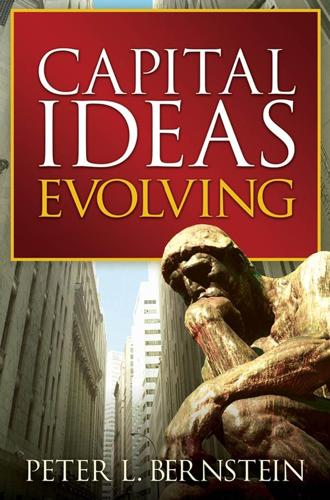
Capital Ideas Evolving
by
Peter L. Bernstein
Published 3 May 2007
As the 1995 report describes it, “Because of the importance of maintaining policy targets, the Investment Office closely monitors deviations of actual from target allocations in the Endowment. When markets rise and fall, the portfolio is rebalanced; that is, securities are bought and sold to maintain actual allocations at the policy targets. By adhering to policy targets, rebalancing imposes a disciplined ‘buy low, sell high’ strategy. . . . While rebalancing is conducted primarily to control risk, the process adds value to the extent the market exhibits excess volatility” (emphasis added). Swensen is an outspoken and eloquent enemy of market timing— the effort to buy low and sell high—which he insists is like chasing rainbows and doomed to failure.
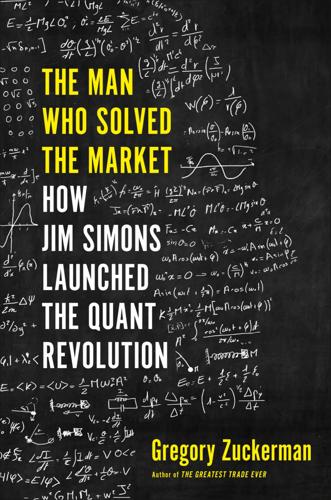
The Man Who Solved the Market: How Jim Simons Launched the Quant Revolution
by
Gregory Zuckerman
Published 5 Nov 2019
He added more automation to the system and, by 1987, it was generating $50 million of annual profits. Team members didn’t know a thing about the stocks they traded and didn’t need to—their strategy was simply to wager on the re-emergence of historic relationships between shares, an extension of the age-old “buy low, sell high” investment adage, this time using computer programs and lightning-fast trades. New hires, including a former Columbia University computer-science professor named David Shaw and mathematician Robert Frey, improved profits. The Morgan Stanley traders became some of the first to embrace the strategy of statistical arbitrage, or stat arb.

Number Go Up: Inside Crypto's Wild Rise and Staggering Fall
by
Zeke Faux
Published 11 Sep 2023
She showed Bankman-Fried some promising results. He didn’t know much about crypto. What caught his attention was a page on CoinMarketCap.com that quoted prices from exchanges around the world. Bankman-Fried saw that certain coins were selling for way more on some exchanges than others. This was the kind of buy-low, sell-high arbitrage opportunity he’d learned to exploit at Jane Street. At the firm, he’d built complex mathematical models for trades that aimed to make money off tiny price differences. On crypto exchanges, the discrepancies were hundreds of times bigger. It looked like free money, and it didn’t require any special blockchain knowledge—click buy on one website, hit sell on another, and earn guaranteed returns.

California Burning: The Fall of Pacific Gas and Electric--And What It Means for America's Power Grid
by
Katherine Blunt
Published 29 Aug 2022
More so than the generators, the traders would become responsible for routing the movement of electricity between different hubs, where they could sell it at prices determined by local supply, demand, transmission costs, and a slew of other variables. At its simplest, trading is a game of arbitrage: buy low, sell high. The Power Exchange set up shop in an office suite about ten miles outside the heart of Los Angeles. Sladoje and his staff lined a small room with boxy desktop monitors and threaded power cords behind a row of desks. It had none of the frenzy of an open trading floor, but it would serve a similar clearinghouse function.

The Hidden Globe: How Wealth Hacks the World
by
Atossa Araxia Abrahamian
Published 7 Oct 2024
After the 2008 financial crisis, when more ordinary assets were generating anemic returns for investors at best, art seemed like a better place to put money than stocks, bonds, or real estate. It became more commonplace to speculate on the works of a contemporary artist as though they were so many stock shares: buy low, sell high. Wealthy people, as well as institutional investors like family offices or funds, could put up a Monet as collateral when borrowing to buy a mansion, a yacht, or a Picasso. And the transactions could be as discreet as they pleased. A clever accountant could easily obscure the real owner of a sculpture behind a labyrinth of shell companies and private trusts, to ensure against its eventual seizure by a reviled ex-spouse or estranged relative.
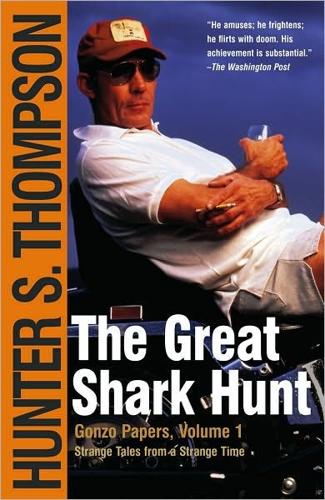
The Great Shark Hunt: Strange Tales From a Strange Time
by
Hunter S. Thompson
Published 6 Nov 2003
Joe Edwards' platform was against the developers, not the old-timers and ranchers -- and it was hard to see, from their arguments, how they could disagree in substance with anything we said. . . unless what they were really worried about was the very good chance that a win by Edwards would put an end to their options of selling out to the highest bidder. With Edwards, they said, would come horrors like Zoning and Ecology, which would cramp their fine Western style, the buy low, sell high ethic. . . free enterprise, as it were, and the few people who bothered to argue with them soon found that their nostalgic talk about "the good old days" and "the tradition of this peaceful valley" was only an awkward cover for their fears about "socialist-thinking newcomers." Whatever else the Edwards campaign may or may not have accomplished, we had croaked that stupid sentimental garbage about the "land-loving old-timers."
…
"Aspen," Colo, would no longer exist -- and the psychic alterations of this change would be massive in the world of commerce: Fat City Ski Fashions, the Fat City Slalom Cup, Fat City Music Festival, Fat City Institute for Humanistic Studies. . . etc. And the main advantage here is that changing the name of the town would have no major effect on the town itself, or on those people who came here because it's a good place to live. What effect the name-change might have on those who came here to buy low, sell high and then move on is fairly obvious. . . and eminently desirable. These swine should be fucked, broken and driven across the land. 3) Drug Sales must be controlled. My first act as Sheriff will be to install, on the courthouse lawn, a bastinado platform and a set of stocks -- in order to punish dishonest dope dealers in a proper public fashion.

The Four Pillars of Investing: Lessons for Building a Winning Portfolio
by
William J. Bernstein
Published 26 Apr 2002
During such periods, “hard assets” such as precious metals, real estate, and “collectibles” (e.g., art, rare coins, etc.) tend to do very well. And third, this asset’s random volatility will work in your favor via the rebalancing mechanism. If you can hold precious metals stocks in a retirement account and trade them without tax consequences, the natural buy-low/sell-high discipline of the rebalancing process should earn 3% to 5% per year in excess of the low baseline return for this asset. Be forewarned that this process takes discipline, because you will be continually moving against the crowd’s sentiment. While you are selling, you will be reading and hearing some very compelling reasons to buy, and when you are buying, you will find that others consider it an act of lunacy.
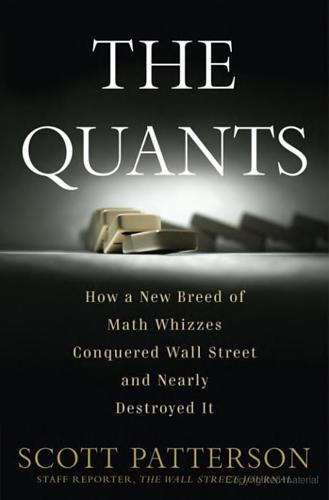
The Quants
by
Scott Patterson
Published 2 Feb 2010
He could also take a long (or short) position in the stock that hadn’t moved, which would protect him in case the other stock failed to shift back to its original price—if the historical spread remained, the long position would eventually rise. Much like Thorp’s delta hedging strategy, it was the old game of buy low, sell high, with a quant twist. After describing his ideas to his superiors, Bamberger was set up on Morgan’s equity desk in early 1983 with $500,000 and a small group of traders. He started making buckets of cash right out of the gate. By September, his group had $4 million worth of long and short positions.

Platform Revolution: How Networked Markets Are Transforming the Economy--And How to Make Them Work for You
by
Sangeet Paul Choudary
,
Marshall W. van Alstyne
and
Geoffrey G. Parker
Published 27 Mar 2016
In a case like this, wise governance may disenfranchise a specific group of stakeholders, such as arbitrageurs, in order to increase the overall health of the ecosystem. High-speed trading on the New York Stock Exchange offers another example. Firms like Goldman Sachs use supercomputers to determine when an order placed in one market will spill over to another market. Then they swoop in to intercept the deal, buying low, selling high, and skimming the margin. This methodology gives a few market participants who can afford massive computing power an unfair advantage over others.35 Such asymmetric market power risks driving away players who feel cheated. To solve this problem, competing exchanges, such as the alternative trading system IEX, are using their own supercomputers to precisely time the order of bids, thereby eliminating the advantages of a Goldman Sachs.36 Architecture can level the playing field, making markets more competitive and fair for all.
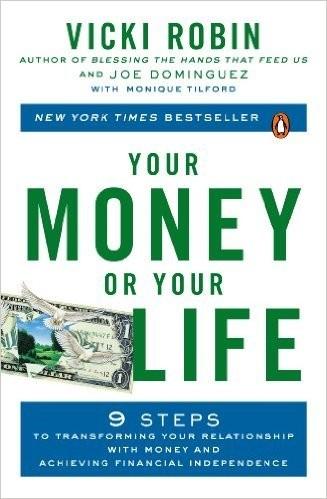
Your Money or Your Life: 9 Steps to Transforming Your Relationship With Money and Achieving Financial Independence: Revised and Updated for the 21st Century
by
Vicki Robin
,
Joe Dominguez
and
Monique Tilford
Published 31 Aug 1992
The important thing is to become as knowledgeable as you can regarding your investment options so that, if you choose to work with a financial planner, you will still be empowered and making your own choices. Dispelling Fears Like your assumptions about money and work, your beliefs about investing have probably been pieced together from media hype, the opinions of coworkers, the advice you got from Uncle Harry (“Buy low, sell high, kid”), randomly generated successes and failures and sundry other unreliable sources. To pierce through these confusions and prejudices you need only recognize that most beliefs about investing rest on two primary driving forces: greed and fear. Hopefully you’ve encountered and tamed your greed through applying the first eight steps of this program.
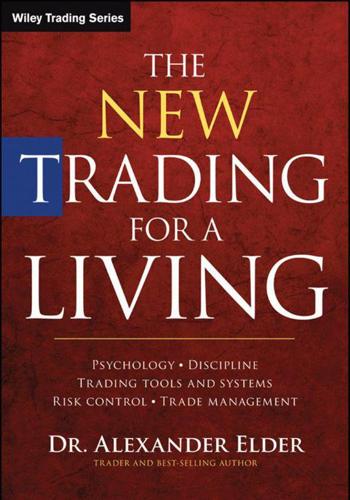
The New Trading for a Living: Psychology, Discipline, Trading Tools and Systems, Risk Control, Trade Management
by
Alexander Elder
Published 28 Sep 2014
Trend-following indicators are profitable when markets are moving but lead to whipsaws in trading ranges. Oscillators are profitable in trading ranges, but give premature and dangerous signals when the markets begin to trend. Traders say: “The trend is your friend,” and “Let your profits run.” They also say: “Buy low, sell high.” But why sell if the trend is up? And how high is high? Some traders try to average out the signals of trend-following indicators and oscillators, but those votes are easy to rig. Just as Republicans and Democrats in the United States keep redrawing electoral districts to create “safe” seats, traders keep selecting indicators that deliver the votes they want to see.

Dark Towers: Deutsche Bank, Donald Trump, and an Epic Trail of Destruction
by
David Enrich
Published 18 Feb 2020
It turned out anyone could do it—all you needed to do was shell out a few hundred dollars to “lease” a membership, which is what Offit did. The trading pits were chaotic. A slight man, Offit got trampled. Twice his instep was crushed in a scrum; another time he fractured his jaw. But Offit found the trading itself to be pretty simple. Buy low, sell high. “It was an elemental world of bids and offers, winners and losers,” Offit would write about the NYMEX decades later. Offit was a winner, and the money made the physical toll worthwhile. In the early 1980s, Offit enrolled in Columbia’s business school. His new ambition was to become a trader at an established Wall Street firm.
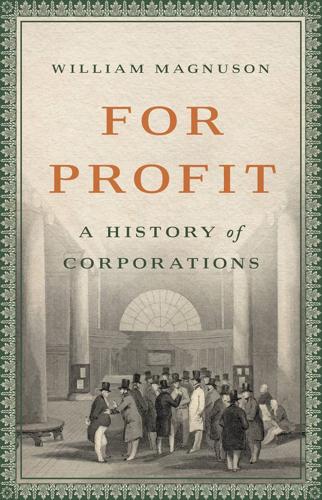
For Profit: A History of Corporations
by
William Magnuson
Published 8 Nov 2022
Second, it bought companies, using the cash from the fund as well as a hefty portion of borrowed money to pay the purchase price. Third, it ran the company for a few years and then sold it, hopefully at a profit, to the public or another buyer. There was nothing particularly magical about these components. “Buy low, sell high” had been a corporate mantra at least since the days of the East India Company. But in the hands of financial wizards like Kohlberg, Kravis, and Roberts, they transformed into something elemental and powerful. To begin with, the trio displayed a remarkable talent for finding people willing to give them oodles of money.

Your Money: The Missing Manual
by
J.D. Roth
Published 18 Mar 2010
Doing this is another way to take the emotion out of investing, because you're investing based on a plan instead of a whim. There are two ways to rebalance: You can sell enough of your winners and buy enough of your losers to bring things back into balance. By selling the investments that have grown and buying those that lag behind, you're following the Wall Street mantra to "buy low, sell high." Be aware, though, that you might owe taxes if you go this route, so check out the tax implications before you sell any securities. If you can afford it, contribute new money to your investment account, but only to buy the assets that need to catch up. For instance, if you only have 34% in bonds instead of your target 40%, add more bonds to bring your portfolio back into balance.

Capital Ideas: The Improbable Origins of Modern Wall Street
by
Peter L. Bernstein
Published 19 Jun 2005
Then the assets are shifted to the market or markets that appear relatively most attractive. Although Sharpe (and Vertin, too) was skeptical about the feasibility of this idea at first, Fouse managed to successfully combine Sharpe’s theoretical concepts with the ideas of Markowitz, Tobin, and John Burr Williams. Although the notion is buy-low-sell-high, tactical asset allocation differs from so-called market timing in two ways. First, it is a scientific method of allocating assets. Second, the idea is to buy undervalued assets and to sell overvalued assets and to wait until the market corrects the perceived misvaluations; this approach differs fundamentally from flatly declaring that “this is the bottom” or “this is the top.”
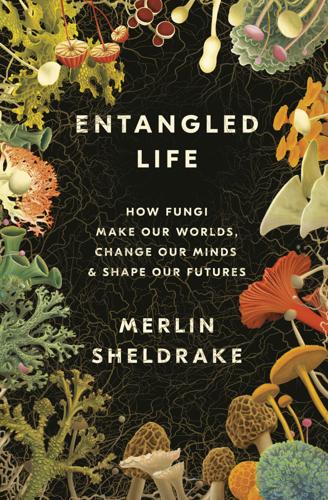
Entangled Life: How Fungi Make Our Worlds, Change Our Minds & Shape Our Futures
by
Merlin Sheldrake
Published 11 May 2020
Where phosphorus was more readily available, the fungus received a less favorable “exchange rate.” The “price” of phosphorus seemed to be governed by the familiar dynamics of supply and demand. Most surprising was the way that the fungus coordinated its trading behavior across the network. Kiers identified a strategy of “buy low, sell high.” The fungus actively transported phosphorus—using its dynamic microtubule “motors”—from areas of abundance, where it fetched a low price when exchanged with a plant root, to areas of scarcity, where it was in higher demand and fetched a higher price. By doing so, the fungus was able to transfer a greater proportion of its phosphorus to the plant at the more favorable exchange rate, thus receiving larger quantities of carbon in return.

Madoff: The Final Word
by
Richard Behar
Published 9 Jul 2024
However, that is counterintuitive and skirts the requirements of an SEC rule that states you must confirm to the customer what “THEY” did, not what YOU, as the brokerage firm counterparty, did. Another customer statement of Adele’s shows 100 percent success in all of the stocks traded during that period: Walmart, Ford Motor, General Motors, American International Group (AIG), and McDonald’s. “It’s nice to be able to always buy low, sell high,” says Dubinsky. “In this case, he sold high by ‘going short,’ then five days later he bought low. This always happened. Nice way to make money. Easy to do when fake.” The customer agreements that Adele and others signed when they began investing through Madoff should also have raised eyebrows.

Bourgeois Dignity: Why Economics Can't Explain the Modern World
by
Deirdre N. McCloskey
Published 15 Nov 2011
As the economic historian Eric Jones put it recently, “Culture, in the sense of bourgeois values [Jones here means psychological dispositions], has not been shown to differ systematically by region.”11 Nor have such values been shown to differ by much else, if “values” are taken to be the dispositions of the bourgeois working down in the marketplaces of Les Halles or Tlatelolco. “Buy low, sell high” is not a modern invention. It has been the basis of trade, always. And Homo sapiens has been a trader, always. Weber’s theory turned the discussion of entrepreneurship toward how psychology is supposed to have changed around 1600, when in fact what changed in Europe in early modern times, starting in Holland, was the sociology and its corresponding politics.
…
In Jane Smiley’s The All-True Travels and Adventures of Lidie Newton (1998) an honor-obsessed Southerner in Quincy, Illinois, in deep winter around 1840 threatens with his guns drawn a storekeeper and livestock dealer: “Horace Silk, you will cheat me no more! Those mules I sold you for a hundred dollars you turned around and sold to Jed Bindle for two fifty, and you ain’t given me none of the profits!” Imagine that—buying low, selling high, and keeping the profit. The Southerner’s Borderer-aristocratic code of honor demands violent satisfaction. “But then Horace’s father,” the narrator continues, “interposed and explained to the man . . . the role of the middleman in every mercantile transaction.” It is the rhetoric of a Yankee and a bourgeois, which doubtless helped less than the narrator’s mother, who “stepped forward and persuaded [the Southerner] to come farther into the store and get warm,” with an implied invitation for peaceful, knightly gallantry toward women, which he accepts.17 All this cheating magic of trade has long angered people.

The Personal MBA: A World-Class Business Education in a Single Volume
by
Josh Kaufman
Published 2 Feb 2011
As long as you continue to make your customers happy, only a small percentage of your customer base will cancel each period, giving you the ability to plan your finances with more certainty. Any subscriber attrition you experience can be overcome by enrolling more customers. SHARE THIS CONCEPT: http://book.personalmba.com/subscription/ Form of Value #5: Resale Buy low, sell high. —STOCK TRADER’S MAXIM Resale is the acquisition of an asset from a wholesale seller, followed by the sale of that asset to a retail buyer at a higher price. Resale is how most of the retailers you’re familiar with work: they purchase what they sell from other businesses, then resell each purchase for more than it cost.

Traders, Guns & Money: Knowns and Unknowns in the Dazzling World of Derivatives
by
Satyajit Das
Published 15 Nov 2006
LTCM was going to purchase ‘cheap’ or ‘underpriced’ securities and ‘hedge’ them by undertaking short sales of ‘expensive’ securities with ‘similar’ characteristics. DAS_C06.QXP 8/7/06 4:43 PM Page 171 5 N The perfect storm – risk mismanagement by the numbers 171 Profits would result when pricing differences corrected. It was the old buy low sell high and the sell high buy low strategy. There were some old favourites as well – tax arbitrage and the standard carry trades. LTCM used leverage, up to 25 times. Individual strategies only yielded small profits, leverage was needed to accentuate the returns. It assured potential investors that risk would be low because the fund would not take directional risks and outright positions.

Inside the House of Money: Top Hedge Fund Traders on Profiting in a Global Market
by
Steven Drobny
Published 31 Mar 2006
See also Sterling Brown Brothers, 271 BTPs (Buoni del Tesoro Poliennali), 85–87 Bucket shops, 36 Buffett,Warren, 278, 292 Bull/bullish market, 83, 107, 123, 217, 225–226, 228, 230–231, 239, 273 Bund/BTP convergence trade, 85–87 Bundesbank, 14 Bunds, 75, 340 Business cycle, global, 328–329 Butterfly options, 46 Buy and hold strategy, 7, 47 Buy low, sell high, 228–229 Buy signals, 226 Call options, 85 Canada, 167 Canadian dollar, 67, 239, 286 Capital allocation, 24, 33, 98–99, 315, 321 Capital preservation, 144, 323–324 Carry trades, 78–79, 110–111, 113, 117–118, 125, 134 Cash market, 85 Caxton, 9–10, 33 Central bank(s)/banking, 32, 40, 83, 139–140, 148, 151–153, 161–162, 167–170, 204, 313, 331 Central banker(s), 13–14, 160, 229, 349.

Stocks for the Long Run, 4th Edition: The Definitive Guide to Financial Market Returns & Long Term Investment Strategies
by
Jeremy J. Siegel
Published 18 Dec 2007
Momentum strategies, unlike fundamental strategies, rely purely on past returns, regardless of earnings, dividends, or other valuation criteria. Momentum investors buy stocks that have recently risen in price and sell stocks that have recently fallen, expecting that the stock price will, for a time, continue to move in the same direction. While this may seem at odds with the old maxim of “buy low, sell high,” there is substantial research to support this “buy-high, sellhigher” strategy. In 1993, Narasimhan Jegadeesh and Sheridan Titman found that stocks with the highest 10 percent returns over the past six months outperformed stocks with the lowest 10 percent returns by about 1 percent per month over the next six months.13,14 Other technical strategies, such as buying stocks priced near their 52-week high, have also been shown to be successful.15 It should be emphasized that these momentum strategies work only in the short term and should not be part of a long-term strategy.

How I Became a Quant: Insights From 25 of Wall Street's Elite
by
Richard R. Lindsey
and
Barry Schachter
Published 30 Jun 2007
I JWPR007-Lindsey May 28, 2007 15:39 Leslie Rahl 89 was reluctant to return to a staff role, but accepted, subject to the quid pro quo that after a year I would hire a staff, and organize the function, he would teach me how to trade. I knew almost nothing about trading. When, early on in my staff prioritizing, I was asked by my new boss to prepare the division’s quarterly review, I was at a complete loss as to what to write for the section titled “Trading Strategy.” As a placeholder, I wrote “Buy low, sell high.” The head of the investment bank loved it, and the report went directly to John Reed as written. I had not advanced far in my trading education when fate intervened and gave me a big push. In 1983, the Chicago Board of Trade (CBOT) began exchange trading of options on bond futures. I was offered the opportunity to trade these derivatives as a proprietary trader for the bank’s account because “you don’t know anything about trading, but at least you went to MIT.
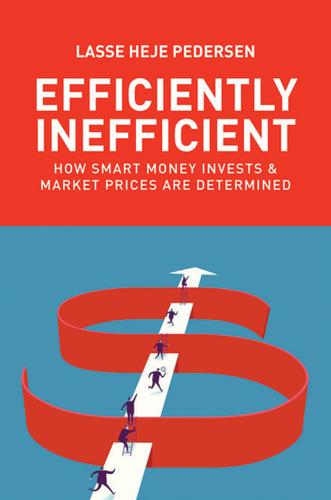
Efficiently Inefficient: How Smart Money Invests and Market Prices Are Determined
by
Lasse Heje Pedersen
Published 12 Apr 2015
Arbitrage Strategies Turning to arbitrage strategies, these consist of fixed-income arbitrage, convertible bond arbitrage, and event-driven investment. Fixed-income arbitrage is based on a number of so-called convergence trades. In a convergence trade, you look for similar securities with different prices; then you buy low, sell high, and hope for convergence. Since fixed-income securities usually have a finite maturity, convergence must eventually happen, but the sooner it happens, the more profitable the trade. The biggest risk in convergence trades is that the trader is forced to unwind the trade when the price gap widens and the trade loses money.
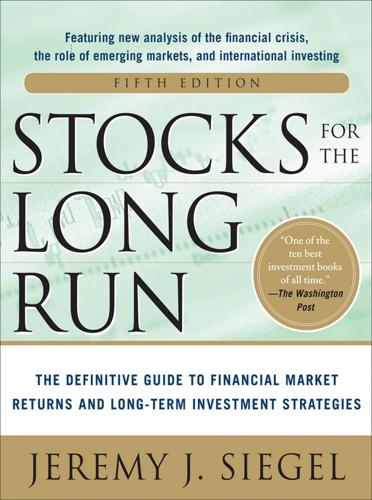
Stocks for the Long Run 5/E: the Definitive Guide to Financial Market Returns & Long-Term Investment Strategies
by
Jeremy Siegel
Published 7 Jan 2014
Momentum strategies, unlike fundamental strategies, rely purely on past returns, regardless of earnings, dividends, or other valuation criteria. Momentum investors buy stocks that have recently risen in price and sell stocks that have recently fallen, expecting that the stock price will, for a time, continue to move in the same direction. While this may seem at odds with the old maxim of “buy low, sell high,” there is substantial research to support this “buy-high, sell-higher” strategy. In 1993, Narasimhan Jegadeesh and Sheridan Titman found that stocks with the highest 10 percent returns over the past six months outperformed stocks with the lowest 10 percent returns by about 1 percent per month over the next six months.13, 14 Other technical strategies, such as buying stocks priced near their 52-week high, have also been shown to be successful.15 It should be emphasized that these momentum strategies work only in the short term and should not be part of a long-term strategy.
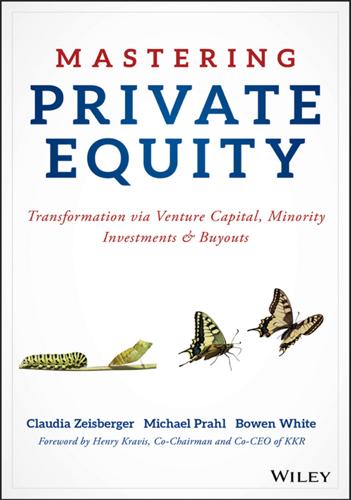
Mastering Private Equity
by
Zeisberger, Claudia,Prahl, Michael,White, Bowen
,
Michael Prahl
and
Bowen White
Published 15 Jun 2017
We focus on PE investments in mature companies, specifically leveraged buyouts (LBOs) and deals in a competitive process, given that they are the most complex.1 Bidding for a Deal Setting the Price and Winning the Deal In an LBO, PE firms often pursue targets in a competitive sales process. It is in a PE firm’s interest to bid as low as possible both to account for the assumptions and execution risk of a target’s business plan and to boost returns (buy low–sell high). However, buyers need to meet the seller’s acceptable reservation price—or a price that is perceived to be “fair”—and outbid (not necessarily only monetarily) the competition. Aside from explicit pricing terms and implicit value-add, in most processes the buyer needs to build trust and avoid triggering a defiant response by the seller.

A First-Class Catastrophe: The Road to Black Monday, the Worst Day in Wall Street History
by
Diana B. Henriques
Published 18 Sep 2017
Rising prices would trigger more buying, and that would drive prices up further; falling prices would trigger more selling, with the opposite effect. Jacobs had hit on the aspect of portfolio insurance that troubled the market’s traditional traders, people who shared John Phelan’s instincts and history at the New York Stock Exchange. They believed in the old rule of “buy low, sell high.” With portfolio insurance, you were deliberately supposed to do the opposite—buy when prices were rising and sell when they were falling. It just felt wrong. Indeed, the portfolio insurer’s success depended on a lot of other people believing the strategy was, in fact, wrong. The LOR concept assumed there would always be a large population of wealthy, unflappable bargain hunters who would persist in buying low and selling high, investors who would step into a falling market to buy all the shares the portfolio insurers would be selling.
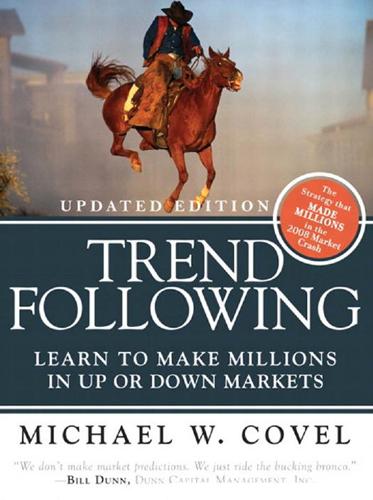
Trend Following: How Great Traders Make Millions in Up or Down Markets
by
Michael W. Covel
Published 19 Mar 2007
If you are watching CNBC for prediction of a trend change, you are in trouble, ‘Casey Jones,’ as Jerry Garcia of The Grateful Dead reminds: “Trouble with you is the trouble with me Got two good eyes but you still don’t see Come round the bend, you know it’s the end The fireman screams and the engine just gleams…”26 The Henry theory— statistically corroborated, of course—is that assets, once in motion, tend to stay in motion without changing direction, and that turns the old saw— buy low, sell high—on its ear.27 244 Enron stock was rated as “Can’t Miss” until it became clear that the company was in desperate trouble, at which point analysts lowered the rating to “Sure Thing.” Only when Enron went completely under did a few bold analysts demote its stock to the lowest possible Wall Street analyst rating, “Hot Buy.”

Venice: A New History
by
Thomas F. Madden
Published 24 Oct 2012
CHAPTER 3 COMING OF AGE: INDEPENDENCE, EXPANSION, AND POWER, 836–1094 Finding two merchants in Muslim Alexandria in the ninth century pilfering the body of a saint is good evidence that Venetians were conducting trade across the Mediterranean Sea at that time. Their overall business model was a simple one: Buy low, sell high. The ninth-century markets on the island of Torcello teemed with activity, just as they would at Rialto in the late tenth century. Venetian businessmen paid handsomely for a wide range of commodities, many of which were grown or produced in Europe and then transported overland or by river to the lagoon.

Gonzo: The Life of Hunter S. Thompson
by
Corey Seymour
,
Johnny Depp
and
Jann S. Wenner
Published 31 Oct 2007
This would prevent greedheads, land-rapers and other human jackals from capitalizing on the name “Aspen.” . . . The main advantage here is that changing the name of the town would have no major effect on the town itself, or on those people who came here because it’s a good place to live. What effect the name-change might have on those who came here to buy low, sell high and then move on is fairly obvious . . . and eminently desirable. These swine should be fucked, broken and driven across the land. 3) Drug Sales must be controlled. My first act as Sheriff will be to install, on the courthouse lawn, a bastinado platform and a set of stocks—in order to punish dishonest dope dealers in a proper public fashion.

The Quiet Coup: Neoliberalism and the Looting of America
by
Mehrsa Baradaran
Published 7 May 2024
He quickly discovered that he could make much more spread in a day trading in the Asian crypto market than he could make in years of high-frequency trading. Guided by the ambition to find the most efficient use of capital possible, he began buying crypto through an online exchange and selling it within a day. It was a classic “buy low, sell high” strategy that is the one consistent rule of wealth accumulation, no matter the market. To effect these trades, Bankman-Fried found a work-around to existing market laws that required some legwork; he withdrew cash from his bank, wired the money to Asia, flew across the world, and made trades across various trading platforms because the trading market in crypto was so inefficient.
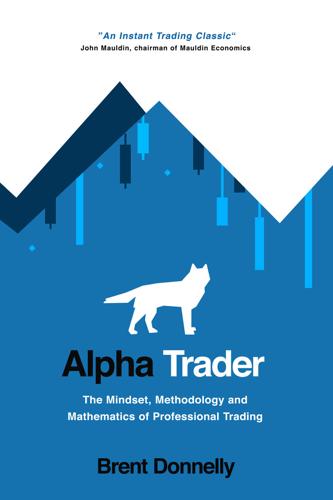
Alpha Trader
by
Brent Donnelly
Published 11 May 2021
This is the easiest and most automatic adaptation you can make as markets change. Rangebound vs. Trending While markets can be volatile or quiet, and liquid or illiquid, they can also be viewed through the lens of Rangebound vs. Trending. Rangebound markets favor mean reversion strategies (buy low/sell high) while trending markets favor breakout or “go with” strategies (buy high/sell higher). You should always have a good sense of whether each market you trade is trending, rangebound or neither. It is not always easy to tell. It is usually straightforward to figure out whether a market has been trending or rangebound.
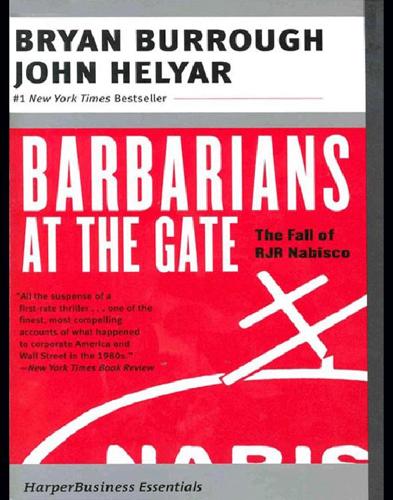
Barbarians at the Gate: The Fall of RJR Nabisco
by
Bryan Burrough
and
John Helyar
Published 1 Jan 1990
When an economic downturn slowed its appliance business, Johnson’s impulse was to throw money at the problem, and he fell back on the expensive marketing schemes he’d developed at Eaton and GE. His new boss, a tightfisted hard case named Ralph Barford, rejected each one in turn. “Ralph’s philosophy was buy low, sell high, and argue over the bills,” recalled Jim Westcott, a Johnson friend who would frequently commiserate with him over lunch. “Boy, did Ralph rip the skin off my back today,” Johnson would moan. Johnson chafed at life in a smaller company. GSW was operating on the edge, with lots of debt, and Johnson suffered through weekly grillings by its bankers.
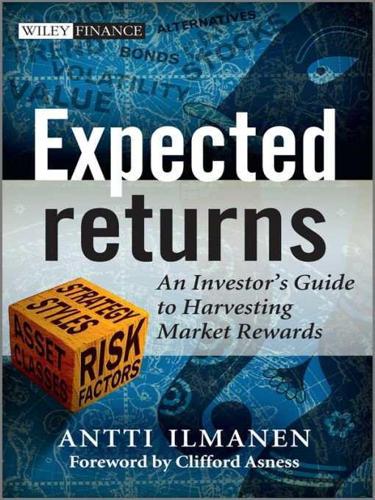
Expected Returns: An Investor's Guide to Harvesting Market Rewards
by
Antti Ilmanen
Published 4 Apr 2011
Specifically, momentum-based stock selection strategies that involve buying recent winners appear profitable. Next, I discuss the literature on value and momentum strategies which initially focused on the U.S. equity market. Cross-sectional trading strategies may be relatively value-oriented (buy low, sell high) or momentum-oriented (buy rising stocks, sell falling ones; essentially buy high, sell low)—and they may be applied within one market (say, equities) or across many asset markets. Micro-inefficiency refers to either the rare extreme case of riskless arbitrage opportunities or the more plausible case of risky trades and strategies with attractive reward-to-risk ratios.

Darwin's Dangerous Idea: Evolution and the Meanings of Life
by
Daniel C. Dennett
Published 15 Jan 1995
" {50} From the outset, there were those who viewed Darwin's novel mixture of detailed naturalism and abstract reasoning about processes as a dubious and inviable hybrid. It had a tremendous air of plausibility, but so do many get-rich-quick schemes that turn out to be empty tricks. Compare it to the following stock-market principle. Buy Low, Sell High. This is guaranteed to make you wealthy. You cannot fail to get rich if you follow this advice. Why doesn't it work? It does work — for everybody who is fortunate enough to act according to it, but, alas, there is no way of determining that the conditions are met until it is too late to act on them.

The First Tycoon
by
T.J. Stiles
Published 14 Aug 2009
They would either borrow the shares in order to deliver, then repay the lenders with shares they bought later at a lower price, or—more commonly in this era—make contracts for sale that gave them weeks or even months to deliver, hoping to buy the shares in the interim at a lower price. Instead of buy low, sell high, the short strategy was sell high, buy low. The Commodore's heavy purchases in “sick Transit” (as brokers called the stock) offered the bears a seemingly perfect opportunity. Unaware of the progress of the talks, they believed the price was doomed to sink.76 On Christmas Eve, Allen concluded the negotiations.

Days of Fire: Bush and Cheney in the White House
by
Peter Baker
Published 21 Oct 2013
He ordered more details put into the speech. “We’re buying low and selling high,” he said, meaning the toxic assets the government would purchase could still be turned around for a profit eventually. When he returned to the family theater a few hours later, he read the revised text and was still unhappy. Why wasn’t the buy-low, sell-high concept in there? he demanded. Because that was not really the concept, someone explained. Bush was exasperated. “Why did I sign onto this proposal if I don’t understand what it does?” he asked. The president stalked out. He had never seemed more exhausted, his face more drawn, thought Latimer.

Corporate Finance: Theory and Practice
by
Pierre Vernimmen
,
Pascal Quiry
,
Maurizio Dallocchio
,
Yann le Fur
and
Antonio Salvi
Published 16 Oct 2017
This behaviour is diametrically opposed to that of the hedger. Traders are professional speculators. They spend their time buying currencies, bonds, shares or options that they think will appreciate in value and they sell them when they think they are about to decline. Not surprisingly, their motto is “Buy low, sell high, play golf!” But the investor is also a speculator most of the time. When an investor predicts cash flows, he is speculating about the future. This is a very important point, and you must be careful not to interpret “speculation” negatively. Every investor speculates when he invests, but his speculation is not necessarily reckless.
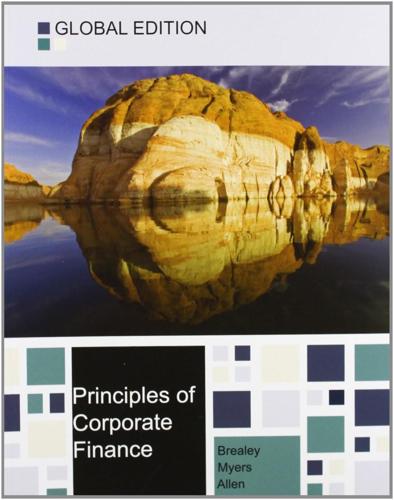
Principles of Corporate Finance
by
Richard A. Brealey
,
Stewart C. Myers
and
Franklin Allen
Published 15 Feb 2014
They want the financial manager to increase the value of the corporation and its current stock price. Thus the secret of success in financial management is to increase value. That is easy to say, but not very helpful. Instructing the financial manager to increase value is like advising an investor in the stock market to “buy low, sell high.” The problem is how to do it. There may be a few activities in which one can read a textbook and then just “do it,” but financial management is not one of them. That is why finance is worth studying. Who wants to work in a field where there is no room for judgment, experience, creativity, and a pinch of luck?